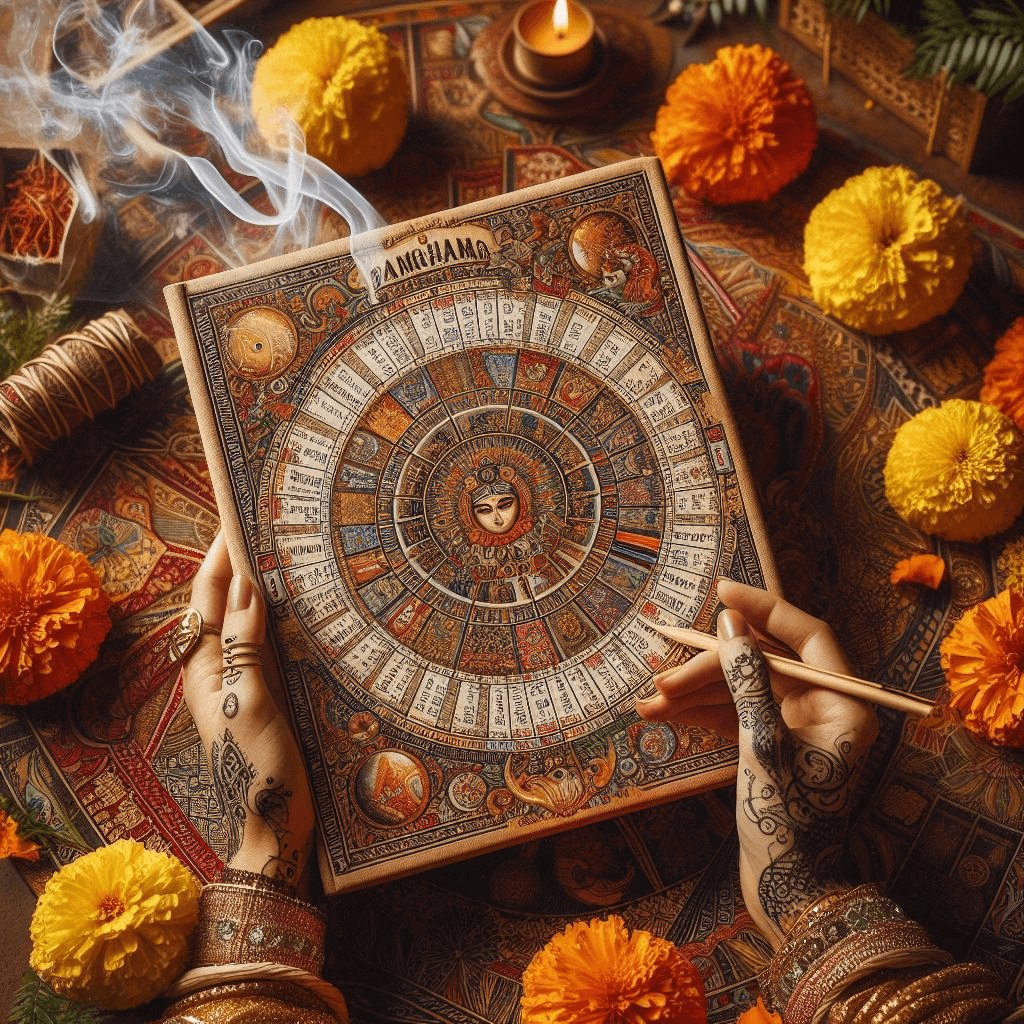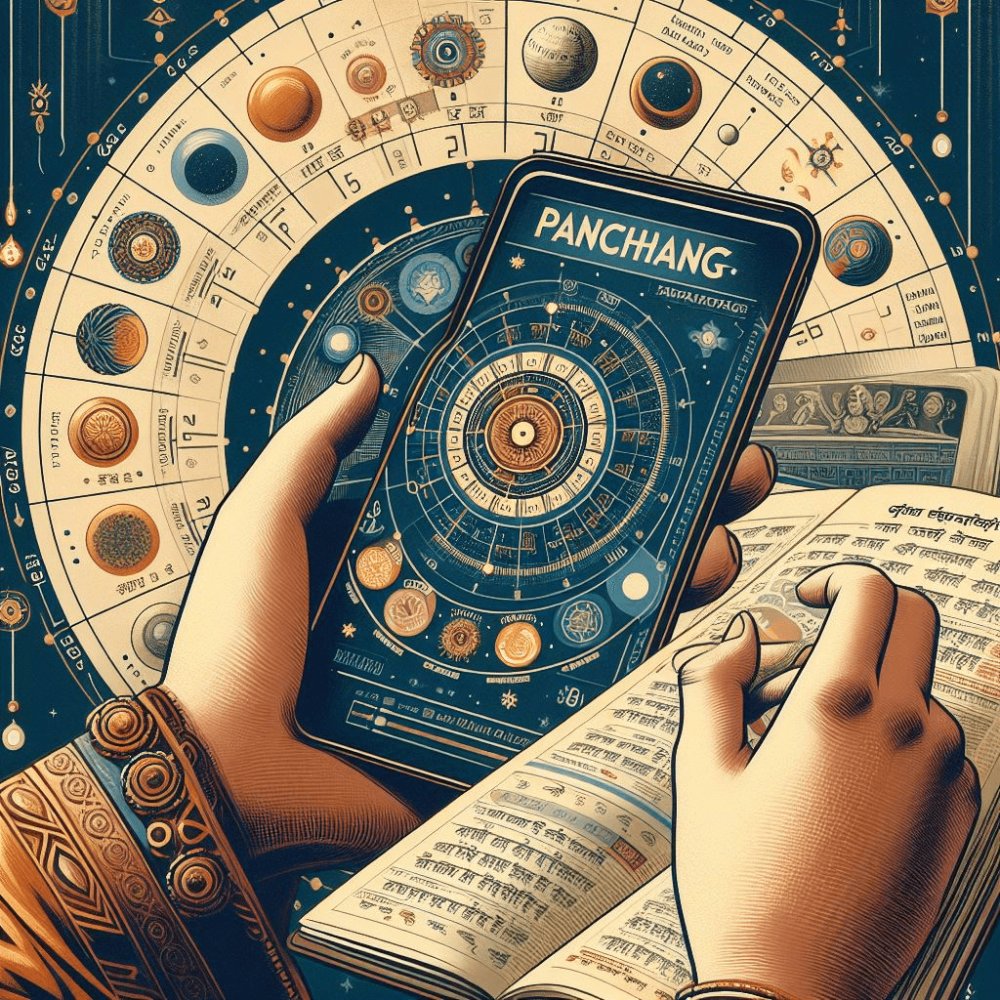

Indian Vedic Astrology is based on precisely made calculations and for centuries ithas helped us to predict disruptive changes much ahead of time. A crucial element of these calculations is Panchang which, just like any other calendar, tells about the tithi, vaar and planetary positions. It is a much detailed calendar that throws light on important information about the day. Let’s understand the usage of Panchang in detail.

Panchang as the name suggests comprises 5 aspects. It is an astrological calendar that is
aligned with the Hindu calendar. One of the prominent Vedic astrology concepts, this
calendar shows the position and movement of planets on a daily basis. It is helpful to
determine muhurat, tithi etc. that help to know about festivals, vrats and other important
events like eclipses. It is recommended to initiate a task considering the panchang. Every
day there are shubh muhurats as well as phases like the rahu kaal. If one plans the day
keeping in mind the panchang, the chances of success of the person increase multifold. Since
minor changes in muhurat can impact the outcome of the work done during that duration, it is
important to refer to an panchang developed by a reliable astrologer since it is based on
minute calculations.
Panchang covers various details ranging from time of sunrise to nakshatra. But the primary 5
aspects of Panchang are – day of the week (vaar); tithi or the lunar day; nakshatra or the
constellation; yoga; and karan.
| Title | Value |
|---|---|
| Date | 16 October 2025 |
| Today's Tithi | (Ends at :00:00) |
| Today's Nakshatra | |
| Today's Karana | |
| Today's Paksha | |
| Today's Yoga | |
| Today's Day | |
| Today's Sun Rise Time | |
| Today's Sun Set Time | |
| Today's Moon Sign | |
| Today's Moon Rise | |
| Today's Moon Set | |
| Today's Ritu | |
| Hindu Month | |
| Vikram Samvat | |
| Today's Gulika | - |
| Today's Rahu Kaal | - |
| Today's Abhijit muhurat | - |
| Today's Disha |

If you have ever been told to do a particular task at a specific time, you have already used
Panchang. From naamkaran (ceremony of giving name to a child) to the muhurat of a person’s
marriage, studying panchang has been key to coming up with the time. The position of
planets, tithi, nakshatra etc help in identifying the time when performing the rituals will
be most beneficial. It’s not limited to religious events, you can know the best time to
launch your business or buy a vehicle or move into a new house through panchang.
Panchang or the Hindu calendar is the most comprehensive calendar. It gives you information
about things which no other calendar can suggest. It doesn’t help change the natural forces
that govern the world but just like a weather forecast can help us when to take our
raincoats along to protect from the thunder and rain.
Understanding the panchang is not very tough when it comes to basic knowledge but learned astrologers can definitely suggest many detailed points to adhere to. Discussed below are the five elements of panchang –
1. Vaar (Day)
Each day of the week is ruled by a planet. For instance, Sunday is ruled by Sun, Monday is ruled by Moon, Tuesday by Mars and so on. The connection of the ruling planet and the deity associated with it has been referred to for centuries to pray, fast and perform other rituals.

2. Tithi
Hindu calendar or panchang divides the month into two phases namely krishna paksha and shukla paksh. Krishna Paksh as the name suggests is when the nights are dark i.e. the moon is decreasing in size and contrary to it is the Shukla Paksha i.e. the moon is getting stronger. A 12 degree change in the position of the moon represents one tithi. There are 30 tithi in one month. It can also be called a lunar day. However, the tithi does not start with the sunrise or end with sunset. It can start at any point of time in the day. Most festivals fall on the purnima (full moon) or amavasya (no moon) tithis of the month. These tithis are further classified into 5 categories – Nanda, Bhadra, Jaya, Rikta and Poorna. Nanda is for joy and happiness, Bhadra is good to start new work, Jaya represents auspicious time for victory, Rikta is not a favourable one and Poona is considered good to do any kind of work.
3. Nakshatra
There are 27 nakshatra (constellations) as per hindu panchang and each is governed by a specific Lord. In Vedic astrology, for the better understanding of the 12 zodiac signs, they were further divided into 27 parts. Each nakshatra contains thirteen degrees and twenty minutes of the zodiac. Further, there are three categories of Nakshatra – Dev, Manushya and Rakshas.
4. Yoga
Yoga means addition and represents the addition of the position of Sun and Moon. There are 27 yogas in total and represent some characteristics of personality as follows
5. Karan
Each tithi is divided into two parts known as karans. In total, there are 11 karans. The four fixed karans occur only once a month. These are – Kintughna, Chatushpada, Sakuni and Naga. Rest seven (Bava, Balava, Kaulava, Taitila, Gara, Vanija and Vishti) are not fixed and called movable. Out of all these Vishtiis considered the most inauspicious. The impact of different karan is different on individuals and only learned astrologers can help understand its impact on your life in detail.
The above 5 elements combined with the positioning of planets in your horoscope can help make accurate predictions about the events in your life. In general as well, keeping in mind the shubh and ashubh times of the day can save you from a lot of trouble. Hence it is important to refer to panchang on an everyday basis.
Copyright © 2024 Yorastro. All Right Reserved.